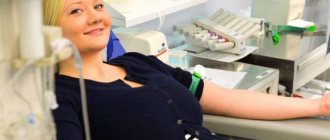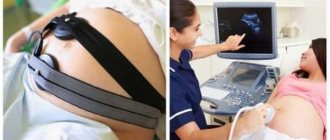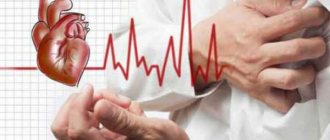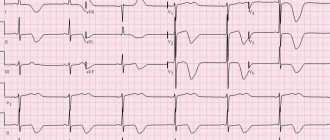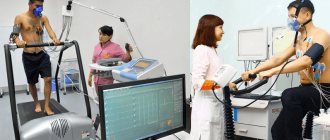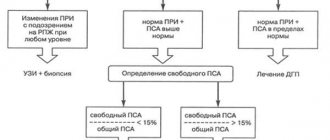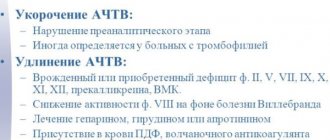general information
Secondary battery guns are included in the Hull module as auxiliary caliber guns - their number can be changed when installing another hull.
As a rule, this type of gun has a similar caliber to the guns of destroyers or even cruisers, but has less range and damage. Thus, the secondary gun serves to combat targets that come close to the ship. In this case, the secondary gun can only use high-explosive fragmentation shells.
By location we can distinguish:
- onboard PMC installations, which are located to the left and right of the ship’s symmetry plane;
- central installations of PMK.
If secondary battery guns are universal, then their functioning as air defense occurs in parallel and does not affect the fight against surface targets.
The secondary gun increases the visibility of a ship from aircraft by 2 km; the effect lasts 20 seconds after the last shot.
If an enemy ship is destroyed with these weapons, the “Melee Master” achievement is awarded.
Reasons for development
Mitral valve prolapse is not an independent disease. It is a syndrome that occurs in numerous diseases. Depending on the etiology, secondary MVP is distinguished - it occurs as a result of other pathologies, and primary - it is also congenital or idiopathic.
Quite often, idiopathic MVP is detected in children and adolescents. It appears due to congenital connective tissue dysplasia. As a result of this disease, other disorders in the structure of the valve apparatus may develop, for example:
- lengthening or shortening of the cardiac chords;
- improper attachment of the chords to the valve flaps;
- presence of additional chords;
As a result of structural changes in the connective tissue, degenerative processes occur in the valve leaflets, and they become more pliable. Because of this, the valve cannot withstand the pressure created by the left ventricle and bends towards the left atrium. Connective tissue dysplasia can occur for various reasons that affect the child in the womb, among them the following:
- Acute respiratory viral infections during pregnancy.
- The presence of occupational hazards in a woman.
- Preeclampsia.
- The influence of environmental factors on the mother during pregnancy.
- Excessive stress on the body of a pregnant woman.
In approximately 20% of cases, congenital MVP is transmitted through the maternal line. In addition, mitral valve prolapse occurs in other hereditary diseases, such as:
- Morphan's syndrome.
- Arachnodactyly.
- Elastic pseudoxanthoma.
- Osteogenesis imperfecta.
- Ehlers-Danlos syndrome.
Secondary MVP (or acquired) can occur as a result of certain diseases. The most common causes of this pathological condition are:
- Cardiac ischemia.
- Rheumatism.
- Hyperthyroidism.
- Chest injuries.
- Hypertrophic cardiomyopathy.
- Systemic lupus erythematosus.
- Myocardial dystrophy.
- Myocarditis.
Prolapse in this case occurs due to damage to the valve leaflets, papillary muscles, chordae or disturbances in the function and structure of the myocardium. Also, an important role in the mechanism of development of MVP is played by disturbances in the functioning of the autonomic nervous system, deficiency of micro- and macroelements (especially Magnesium) and metabolic pathology.
Another cause of secondary prolapse is aortic valve stenosis. As a result of this acquired defect, the opening of the aortic valve narrows, and blood cannot fully pass through it. This creates excess pressure in the left ventricle, which in turn presses on the bicuspid valve. If there is a fact of prolonged existence of excess pressure, then the mitral valve leaflets begin to bend towards the left atrium, and prolapse occurs.
Firing
The secondary gun fires automatically and a number of rules apply:
- the guns fire at the nearest enemy ship, taking into account the action of the sector system: if the enemy ship is located on the side, then both the guns on this side and the central guns fire;
- if the enemy ship is perpendicular to the side (in front or behind), then either only the central installations, or a number of side installations will fire - but only in a narrow sector;
- if there are several enemy ships near the player, then the central guns will prioritize the closest target, but the side guns will fire at the targets closest to each side.
Forecast for life
The prognosis for life is favorable. Complications rarely develop, and the patient’s quality of life does not suffer. However, the patient is contraindicated from engaging in certain sports (jumping, karate), as well as professions that overload the cardiovascular system (divers, pilots).
Regarding military service, we can say that, according to orders, suitability for military service is decided individually for each patient by a military medical commission. So, if a young man has mitral valve prolapse without regurgitation or with regurgitation of the 1st degree, then the patient is fit for service. If there is regurgitation of the 2nd degree, then the patient is conditionally fit (in peacetime he will not be called up). If there is grade 3 regurgitation, arrhythmias or heart failure of functional class 11 or higher, military service is contraindicated.
Thus, most often a patient with mitral valve prolapse with a favorable course and in the absence of complications can serve in the army.
source
Improving the characteristics and survivability of secondary guns
The effectiveness of guns of this class can be increased:
- ship commander skills:
- "Desperate" ;
- "Basic fire training";
- "Enhanced fire training";
- "Manual fire control of secondary guns".
- upgrades:
- "PMK Modification 2";
- "PMK Modification 3".
- signal Mike Yankee Soxisix. Although you can also increase the likelihood of a fire on an enemy ship by using Victor Lima and India X-Ray signals.
The survivability of secondary battery installations can be increased by 100% using the “Auxiliary Weapons Modification 1” upgrade.
Unique upgrades of some Tier X ships can also affect the characteristics of the secondary battery.
Meaning of the word PMK
PMK is an abbreviation that can mean:
- PMK - swimming bag for cavalry.
- MVP - mitral valve prolapse, a heart disease.
- PMK is the Perm Engine-Building Complex, a group of enterprises connected by the common brand “Perm Motors”.
- PMC—piperonyl methyl ketone.
- PMK is a mobile mechanized column, an institution carrying out construction, installation or repair work.
- PMC is a plastic-metal structure consisting of a PVC profile, reinforcement, and other spare parts, commonly known as a “plastic window.”
- PMK is a teenage and youth club, an institution that organizes permanent leisure activities for youth and teenagers.
- Industrial-metallurgical holding is a Russian metallurgical and coke-chemical group of companies. As of 2009, it is the world's largest exporter of cast iron.
- PMK - Production of metal structures, manufacturing company, creation of structures based on metalworking. Such as racks, cabinets, complex products and components for them for private and industrial use. In the fields of communications, network construction, television, radio broadcasting, fire safety and other areas.
- PMK - Marketing Communications Plan.
- PMK - anti-mine caliber. Guns with a caliber of up to 152 mm, automatically controlled and designed to attack surface targets.
The village of PMK is a village in the Yartsevo district of the Smolensk region of Russia. It is part of the Kapyrevshchinskoye rural settlement. Population: 288 inhabitants (2007).
Located in the northern part of the region, 17 km northeast of Yartsev, 12 km north of the highway. Svishchevo railway station is located 14 km southeast of the village on the Moscow-Minsk line.
PMK - swimming bag for cavalry.
The secondary battery is intended for transporting equipment, uniforms, ammunition, food and other cavalry items, which in weight and size correspond to the carrying capacity of the bag and its dimensions.
PMK - names of settlements:
Transliteration: PMK Backwards reads like: kmp Pmk consists of 3 letters
Classification
Mitral valve prolapse can be:
- Primary. Associated with connective tissue weakness, which occurs with congenital connective tissue diseases and is often transmitted genetically. With this form of pathology, the mitral valve leaflets are stretched, and the retaining leaflets of the chord are lengthened. As a result of these violations, when the valve closes, the flaps protrude and cannot close tightly. Congenital prolapse in most cases does not affect the functioning of the heart, but is often combined with vegetative-vascular dystonia - the cause of symptoms that patients associate with heart pathology (periodically occurring functional pain in the chest, cardiac arrhythmias).
- Secondary (acquired). Develops in various heart diseases that cause disruption of the structure of the valve leaflets or chords. In many cases, prolapse is provoked by rheumatic heart disease (an inflammatory disease of the connective tissue of an infectious-allergic nature), undifferentiated connective tissue dysplasia, Ehlers-Danlos and Marfan diseases (genetic diseases), etc. In the secondary form of mitral valve prolapse, pain that passes after taking nitroglycerin is observed, interruptions in heart function, shortness of breath after exercise and other symptoms. If the cardiac chords rupture as a result of a chest injury, emergency medical attention is required (the rupture is accompanied by a cough, during which foamy pink sputum is released).
Primary prolapse, depending on the presence/absence of noise during auscultation, is divided into:
- The “silent” form, in which symptoms are absent or scanty, and noises and “clicks” typical for prolapse are not heard. Detected only by echocardiography.
- Auscultatory form, which, when auscultated, is manifested by characteristic auscultatory and phonocardiographic “clicks” and noises.
Depending on the severity of the sagging of the valves, mitral valve prolapse is distinguished:
- I degree - the doors bend by 3-6 mm;
- II degree - there is a deflection of up to 9 mm;
- III degree - the sashes bend by more than 9 mm.
general information
Secondary battery guns are included in the Hull module as auxiliary caliber guns - their number can be changed when installing another hull.
As a rule, this type of gun has a similar caliber to the guns of destroyers or even cruisers, but has less range and damage. Thus, the secondary gun serves to combat targets that come close to the ship. In this case, the secondary gun can only use high-explosive fragmentation shells.
By location we can distinguish:
- onboard PMC installations, which are located to the left and right of the ship’s symmetry plane;
- central installations of PMK.
If secondary battery guns are universal, then their functioning as air defense occurs in parallel and does not affect the fight against surface targets.
The secondary gun increases the visibility of a ship from aircraft by 2 km; the effect lasts 20 seconds after the last shot.
If an enemy ship is destroyed with these weapons, the “Melee Master” achievement is awarded.
Symptoms of mitral valve prolapse
The severity of symptoms of mitral valve prolapse varies from minimal to significant and is determined by the degree of connective tissue dysplasia, the presence of regurgitation, and autonomic abnormalities. Some patients do not have any complaints, and mitral valve prolapse is an incidental finding on echocardiography.
In children with primary mitral valve prolapse, umbilical and inguinal hernias, hip dysplasia, joint hypermobility, scoliosis, flat feet, chest deformity, myopia, strabismus, nephroptosis, varicocele are often detected, indicating a disorder in the development of connective tissue structures. Many children are predisposed to frequent colds, sore throats, and exacerbations of chronic tonsillitis.
Quite often, mitral valve prolapse is accompanied by symptoms of neurocirculatory dystonia: cardialgia, tachycardia and interruptions in heart function, dizziness and fainting, vegetative crises, excessive sweating, nausea, a feeling of a “lump in the throat” and lack of air, migraine-like headaches. With significant hemodynamic disturbances, shortness of breath and increased fatigue occur. The course of mitral valve prolapse is characterized by affective disorders: depressive states, senestopathies, asthenic symptom complex (asthenia).
Clinical manifestations of secondary mitral valve prolapse are combined with symptoms of the underlying disease (rheumatic carditis, congenital heart defects, Marfan syndrome, etc.). Possible complications of mitral valve prolapse include life-threatening arrhythmias, infective endocarditis, thromboembolic syndrome (including stroke, pulmonary embolism), and sudden death.
Prolapse in childhood
In childhood, MV prolapse occurs much more often than in adults. This is evidenced by statistical data based on the results of ongoing research. It is noted that in adolescence, MVP is diagnosed twice as often in girls. Children's complaints are of the same type. Basically, this is an acute lack of air, heaviness in the heart and chest pain.
The most common diagnosis is grade 1 anterior leaflet prolapse. It was detected in 86% of examined children. Stage 2 disease occurs in only 11.5%. MVP III and IV with degree regurgitation are very rare, occurring in no more than 1 child out of 100.
Symptoms of MVP manifest themselves differently in children. Some people practically do not feel abnormal heart function. In others it manifests itself quite strongly.
- Thus, chest pain is experienced by almost 30% of adolescent children who have been diagnosed with MVC (mitral valve prolapse). It is caused by various reasons, among which the most common are the following:
- chords that are too tight;
- emotional stress or physical stress leading to tachycardia;
- oxygen starvation.
- The same number of children experience heart palpitations.
- Often teenagers who spend a lot of time at the computer, preferring mental activity to physical activity, are prone to fatigue. They often experience shortness of breath during physical education classes or when doing physical work.
- Children diagnosed with MVP often exhibit neuropsychological symptoms. They are prone to frequent mood swings, aggressiveness, and nervous breakdowns. Under emotional stress, they may experience short-term fainting.
During the examination of the patient, the cardiologist uses various diagnostic tests, through which the most accurate picture of MVP is revealed. The diagnosis is established when noises are detected during auscultation: holosystolic, isolated late systolic or in combination with clicks, isolated clicks (clicks).
Heart valve prolapse in childhood often develops due to a lack of magnesium ions. Magnesium deficiency disrupts the process of collagen production by fibroblasts. Along with a decrease in magnesium content in the blood and tissues, there is an increase in beta-endorphin and an imbalance in electrolyte balance. It has been noted that children diagnosed with MVP are underweight (inappropriate for height). Many of them have myopathy, flat feet, scoliosis, poor development of muscle tissue, and poor appetite.
It is recommended to treat MVP with a high degree of regurgitation in children and adolescents, taking into account their age group, gender and heredity. Based on the severity of the clinical manifestations of the disease, a treatment method is selected and medications are prescribed.
But the main emphasis is on changing the child’s living conditions. Their mental load needs to be adjusted. It must alternate with physical exercise. Children should visit a physical therapy room, where a qualified specialist will select the optimal set of exercises, taking into account the individual characteristics of the course of the disease. Swimming lessons are recommended.
Firing
The secondary gun fires automatically and a number of rules apply:
- the guns fire at the nearest enemy ship, taking into account the action of the sector system: if the enemy ship is located on the side, then both the guns on this side and the central guns fire;
- if the enemy ship is perpendicular to the side (in front or behind), then either only the central installations, or a number of side installations will fire - but only in a narrow sector;
- if there are several enemy ships near the player, then the central guns will prioritize the closest target, but the side guns will fire at the targets closest to each side.
Improving the characteristics and survivability of secondary guns
The effectiveness of guns of this class can be increased:
- ship commander skills:
- "Desperate" ;
- "Basic fire training";
- "Enhanced fire training";
- "Manual fire control of secondary guns".
- upgrades:
- "PMK Modification 2";
- "PMK Modification 3".
- signal Mike Yankee Soxisix. Although you can also increase the likelihood of a fire on an enemy ship by using Victor Lima and India X-Ray signals.
The survivability of secondary battery installations can be increased by 100% using the “Auxiliary Weapons Modification 1” upgrade.
Unique upgrades of some Tier X ships can also affect the characteristics of the secondary battery.
